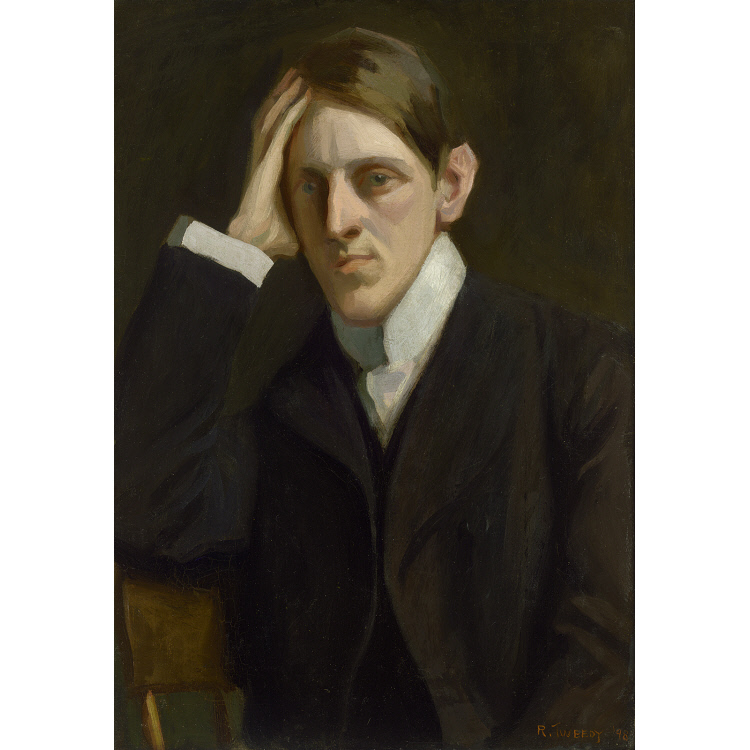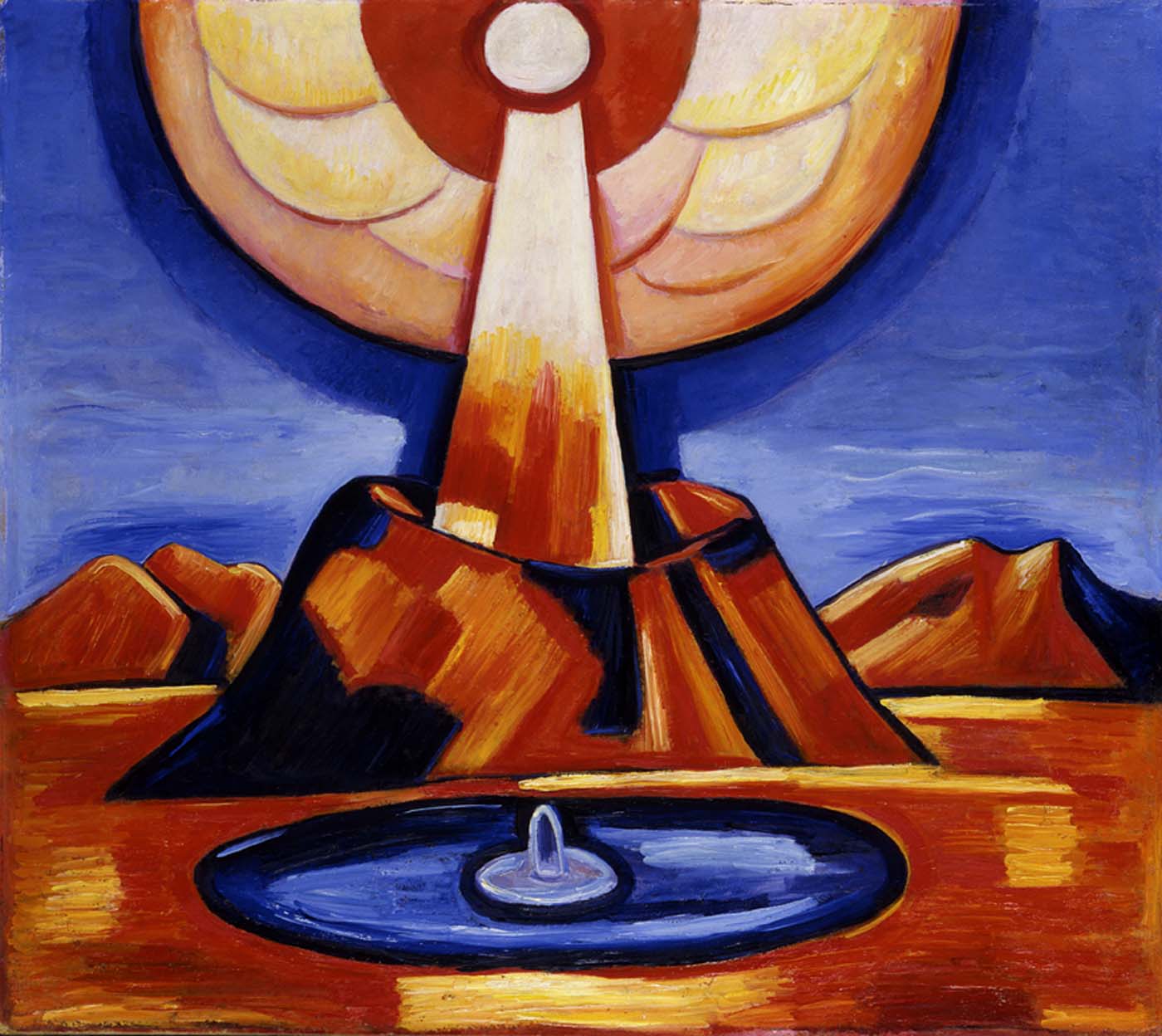Marsden Hartley
Born in Lewiston, Maine, Hartley embarked on a lifelong search for family after his own dissolved in his youth with the early death of his mother and his father's remarriage. When Hartley was twelve years old, his father and stepmother left the boy with his older sister for four years. He was an introspective and isolated child, and these traits, in addition to his homosexuality, were a source of tension all his life.
Hartley's attachment to the landscape of Maine was an important element of his painting career. Simultaneously attracted and depressed by the scenery, he returned every summer during the years he studied in New York (first with William Merritt Chase and then at the less expensive National Academy of Design) and lived there with his father and stepmother during his twenties and thirties. Hartley's early pictures, aggressively brushed impressionist landscapes painted in North Lovell, reveal his efforts of find his own style.
His first critical success came with an exhibition at Alfred Stieglitz's 291 Gallery in New York in 1909. Subsequent years were spent painting in Europe, New York, New Mexico, New Hampshire, Mexico, Bermuda, and Nova Scotia. At the end of his career, Hartley returned to Maine, whose wild landscape he considered unique and whose people, he believed, "practiced values of directness and trust." His later Maine paintings were to some dregree a means of resolving his artistic and personal struggles. He invested the landscape, particularly Mount Katahdin and the shore, with a spiritual significance informed by his belief in the transcendentalism of Whitman and Emerson. He experienced a degree of success in the early 1940s, when several museums acquired his work.
William H. Truettner and Roger B. Stein, editors, with contributions by Dona Brown, Thomas Andrew Denenberg, Judith K. Maxwell, Stephen Nissenbaum, Bruce Robertson, Roger B. Stein, and William H. Truettner Picturing Old New England: Image and Memory (Washington, D.C.; New Haven, Conn; and London: National Museum of American Art with Yale University Press, 1999)




















































